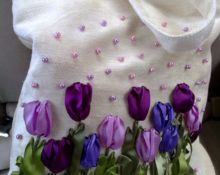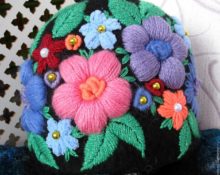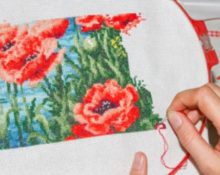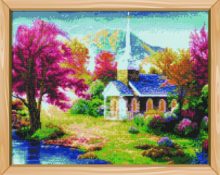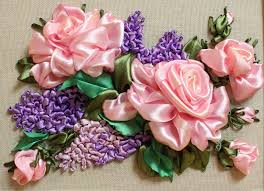 Embroidery is one of the most famous types of women's needlework, which appeared in ancient times. They embroider with threads, beads, and even ribbons. The latest needlework technique is very popular and is well suited for creative people - after all, with the help of ribbons you can depict patterns, create compositions and even entire three-dimensional paintings!
Embroidery is one of the most famous types of women's needlework, which appeared in ancient times. They embroider with threads, beads, and even ribbons. The latest needlework technique is very popular and is well suited for creative people - after all, with the help of ribbons you can depict patterns, create compositions and even entire three-dimensional paintings!
For reference. Satin ribbon embroidery became famous thanks to the fashion trends of the 18th century - during this period, elaborately decorated clothing was popular among the French nobility. The decoration was usually silk or satin ribbons, which were arranged in a variety of patterns.
Now this technique is less known than cross stitch, but quite common. And for good reason - working with tapes provides a lot of scope for imagination, does not take much time and does not require any special skills.
Embroidery with satin ribbons, step-by-step patterns for beginners
This type of needlework, like any other, is based on several features and secrets.You can embroider in different ways: ribbons are laid in stitches, like ordinary threads, or in voluminous patterns - ruffles, flowers, etc. A combination of both methods gives excellent results.
To get started you will need:
- fabric or canvas;
- ribbons and threads;
- hoop;
- needles;
- scissors;
- ruler and compass;
- a simple pencil or disappearing marker;
- if desired, decorative elements such as beads, seed beads, etc.
Important! The fabric should not be too thin, otherwise the embroidery may spread. To embroider on thick fabric, you will have to pierce holes with an awl. And when choosing canvas as a base, you need to remember to process its edges.
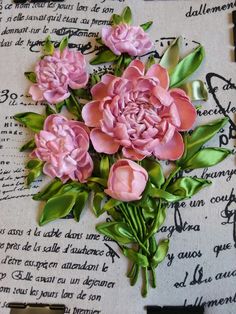 You can take any ribbons - depending on how the finished composition should look, light and airy silk ribbons or stiffer polyester ones are used. If they are too long, they are cut so as not to be damaged during the embroidery process.
You can take any ribbons - depending on how the finished composition should look, light and airy silk ribbons or stiffer polyester ones are used. If they are too long, they are cut so as not to be damaged during the embroidery process.
First you need to make a sketch of the composition on paper (or take a ready-made diagram). The drawing is transferred to the fabric - through tracing paper or using a pencil/special disappearing marker.
Then thread the ribbon into the eye of the needle. To do this, one edge of the ribbon is cut diagonally and cauterized.
Before you start, you can make a knot at the end of the tape to secure it to the fabric. But still, it is better to avoid knots on the wrong side of the work - they can create an unpleasant lumpiness in the finished picture, and if the fabric is thin, then show through it. As an alternative, you can use hidden stitches or not fasten the tape at all - after a few stitches it will adhere quite firmly to the fabric.
Now you need to decide what stitches to embroider. There are quite a lot of them:
- straight stitch - performed in the same way as thread stitches.Suitable for making many details, such as flower petals;
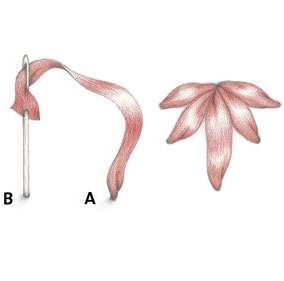
- Ribbon stitch - almost like a simple stitch, but at its ends a needle is passed through the ribbon strictly in the middle. A good alternative to a simple stitch when making petals;
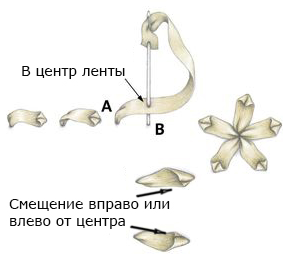
- Chinese knot - the fabric is pierced with a needle from the wrong side, the ribbon is stretched into a loop, and then the needle is passed from the front side through this loop. A popular way to depict flower cores;
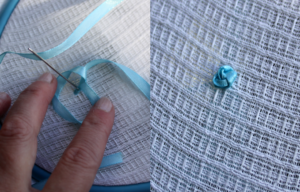
- double Chinese knot - performed as the previous one, but before inserting the needle into the fabric you need to thread it through a ribbon folded like an accordion;
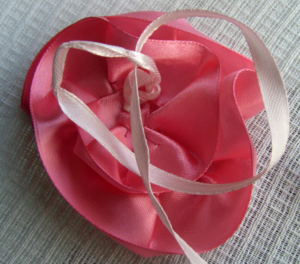
- French knot - the fabric is pierced from the inside out, after removal the tape is wrapped around the needle, then the needle is brought out inside out. A very interesting type of stitch - you can use it to make flower cores and create “scattered” compositions.
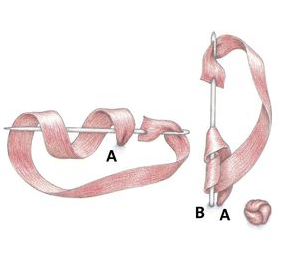
The above are just the basic types of embroidery techniques that will allow you to depict several simple flowers. All types of stitches are simple and quick, and a beginner can immediately begin creating picturesque flower bouquets. But embroidering complex paintings will require experience - when doing them, it is very important to “feel” the composition correctly.
Master class: embroidery with satin ribbons
Below are some simple diagrams that will help you immerse yourself in creativity.
Chamomile. Two ovals are drawn on the fabric, one inside the other. Then, with white tape, ribbon stitches are laid from the border of the small oval to the border of the large one until petals are formed. The core is embroidered with a yellow ribbon.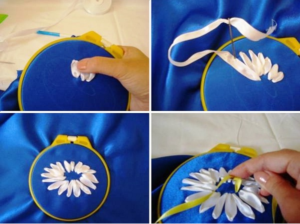
Rose. The tape is rolled into a tube and secured with simple threads at the bottom. The resulting core is sewn to the fabric, then loose loops are made around it in several rows.You can leave the finished rose alone or add a beautiful bouquet to it.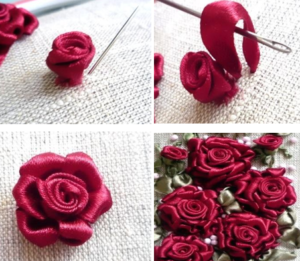
Tulip. A needle with a wide ribbon is inserted from the wrong side, then a simple short stitch is made. Repeat several times until the flower becomes voluminous. A stem is added to the bud - the needle is inserted from the inside out, the ribbon is twisted into a tube, then the needle is brought out from the inside out at the base of the flower. You can add leaves using ribbon stitches and you're done!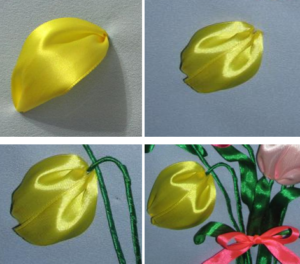
Pansies. Take a piece of tape 4–5 cm wide and about 15 cm long. It is stitched on the side with regular threads, then the stitches need to be drawn from the bottom to the middle, from there up, then down. Next, the stitches are made to the right to the opposite edge and up. All that remains is to tighten the threads, and the upper petals are ready. The lower petals are made in the same way, only the ribbon is divided into three parts. And sew the petals to the fabric and add leaves, stem and pith.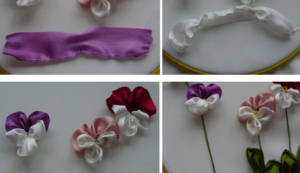
Sunflower. The petals are made with ribbon stitches in a circle. The core is embroidered with thick dark threads using a scattering of French knots. The stem is a ribbon folded into a flagellum, and the leaves are made similarly to the petals.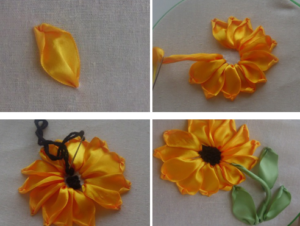
These simple master classes will help you create beautiful flower bouquets that will serve as an exquisite decoration for a pillow, napkin or box. And having gained a little experience, you can create your own patterns and come up with unique compositions - in this type of needlework, the flight of imagination is not limited to anything!


 0
0